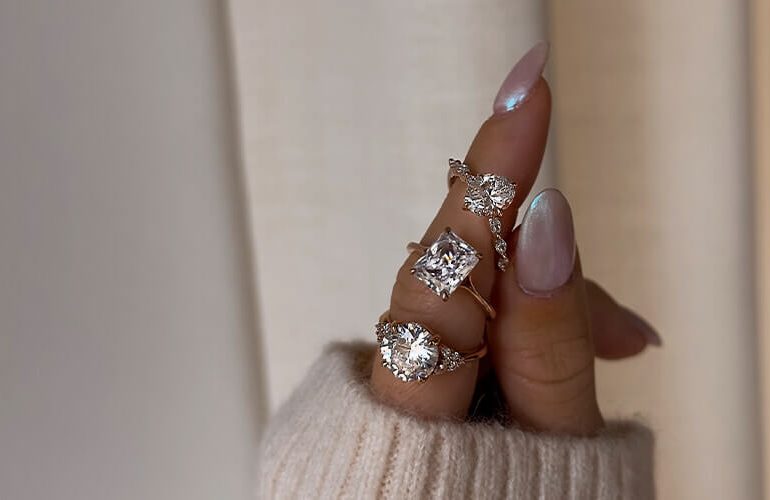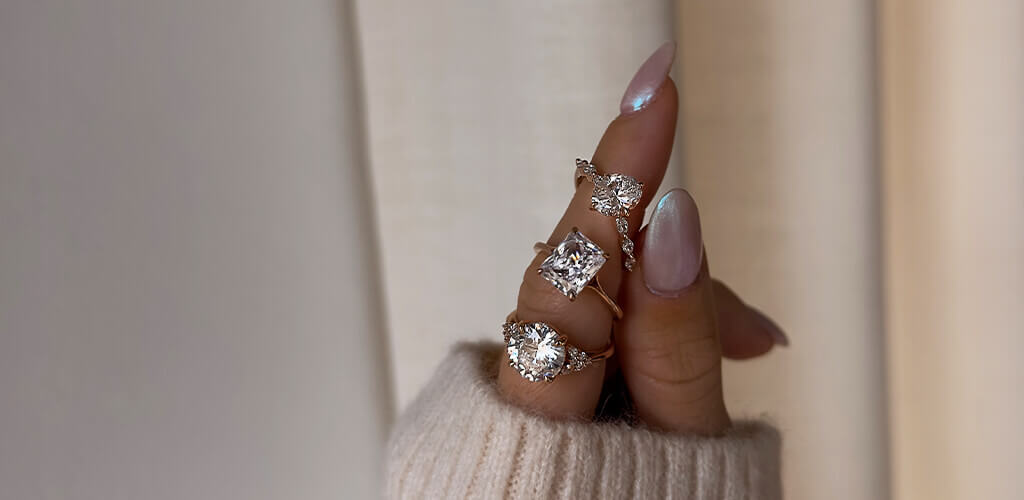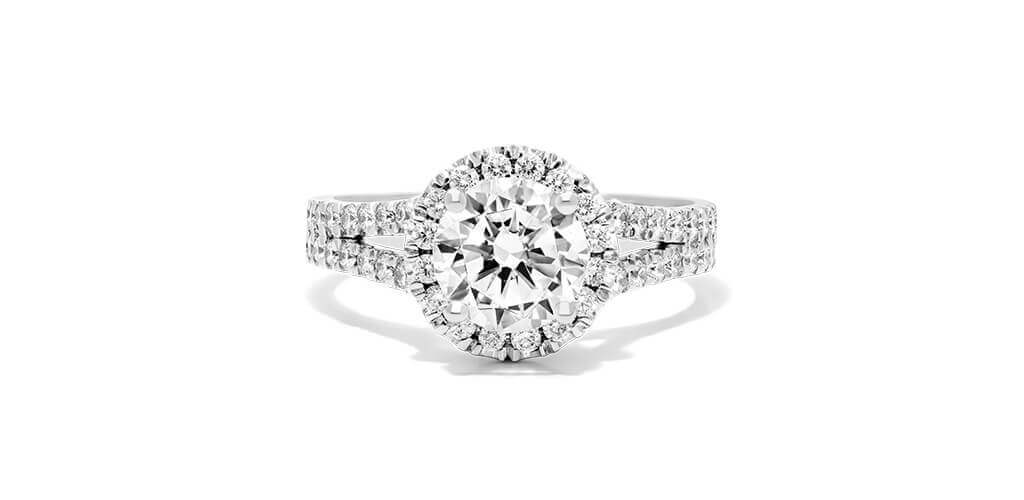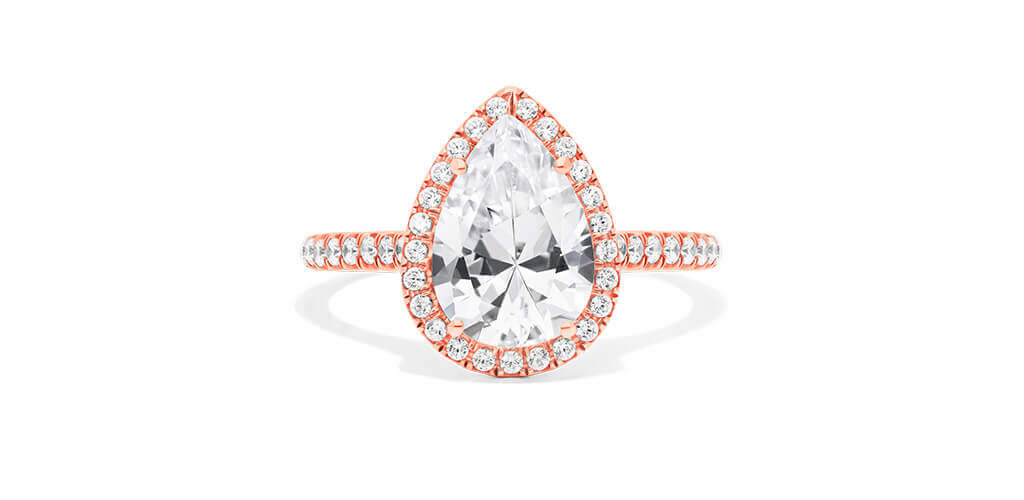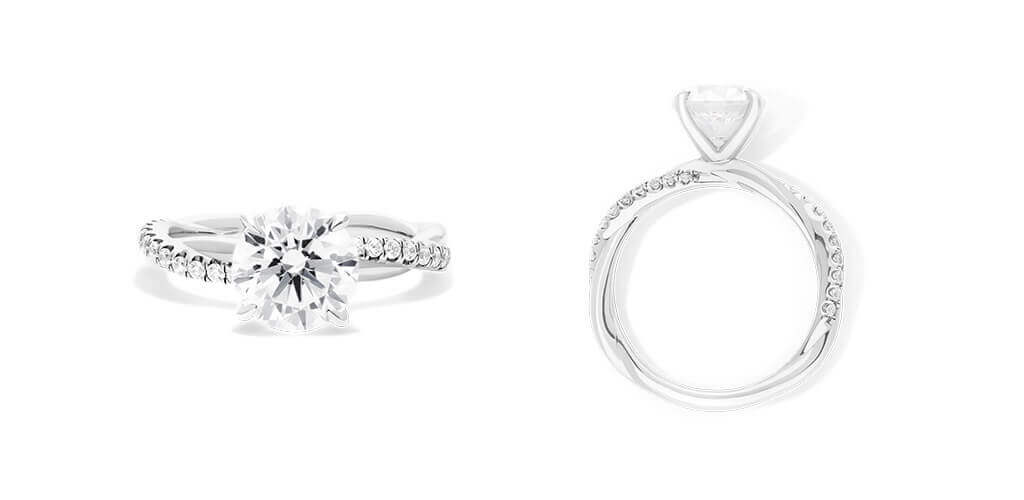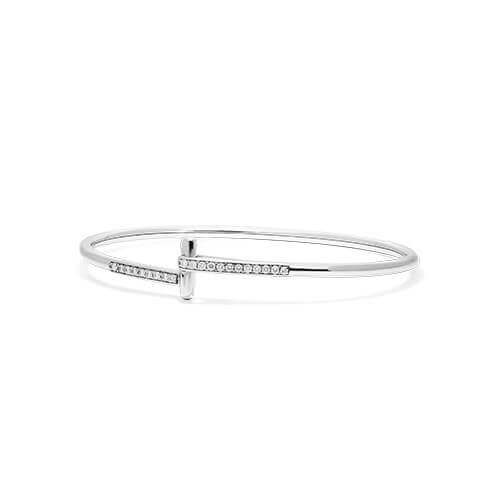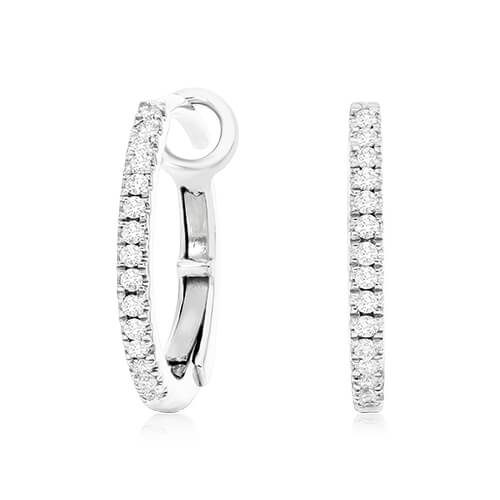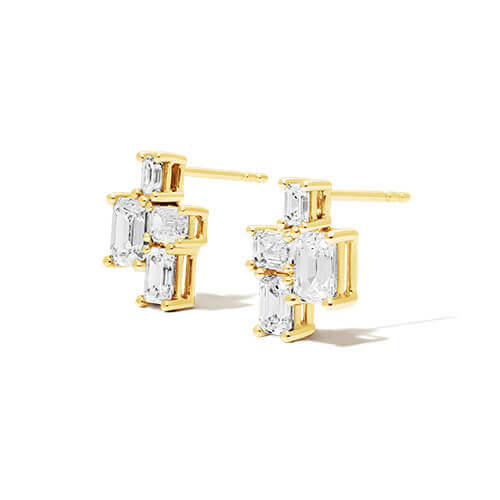Have you heard of the 4Cs? Wondering what they are? Whether you are getting ready to pop the question, treat yourself, or you simply need some new sparkle in your life, you need to know about the 4Cs. Let’s break it down!
Table of Contents
What Are The 4Cs?
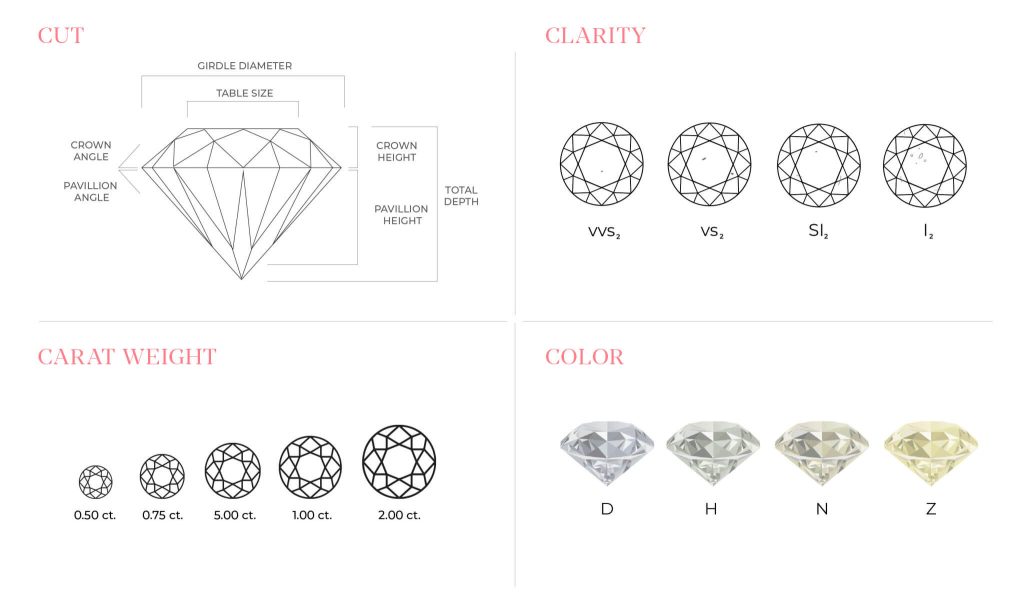
The 4Cs: cut, color, clarity, and carat weight, are what is used to a diamond’s quality is determined.
| Cut: Quality of the angles, proportions, facets, and finishing details. | Color: How colorless the diamond is. |
| Clarity: How clean the diamond is of inclusions and blemishes. | Carat: The weight of the diamond. |
Breaking Down The 4Cs
Diamonds are like snowflakes, no two are alike. Diamonds, even traditional colorless diamonds, come in a variety of colors, cuts, shapes, and sizes.
| We’re going to focus on the colorless diamonds you know and love, but let’s not forget about gorgeous fancy color diamonds too! Find out more here: A Beginner’s Guide to Understanding Fancy Color Diamonds |
Due to the individuality and intricacy of diamonds, independent research institutions such as the Gemology Institution of America (GIA), the American Gem Society (AGS), and the International Gemological Institute (IGI), developed a grading system and issue certificates that evaluate a diamond’s characteristics.
Cut
A diamond cut refers to the gemstone’s symmetry, proportions, and polish, including the facets and angles produced when shaping a diamond. While the term cut is used interchangeably with the term shape, it is actually different.
Cut is also important because it has the biggest influence on a diamond’s ability to reflect light and shine. Basically, cut is important to a diamond’s sparkle. This is why it is so important that the lapidary (a person who cuts diamonds and gems) employ incredible precision and artistry, in order to make a diamond shine as bright as possible.
This difficulty is also why Cut is the hardest of the 4Cs to evaluate.
Color
Despite the name, when one is grading a traditional diamond’s color, they are actually looking for the absence of color. A perfect diamond will ideally have no hue whatsoever- almost like a drop of water. The clearer the diamond, the higher the value.
The GIA developed a color grading scale that goes from D to Z, this scale is now the industry standard. The highest-value diamond will have a D, meaning colorless, and the lowest-value diamond will have a Z, meaning full of color.
The color of a diamond is carefully measured using controlled light and comparison tools.
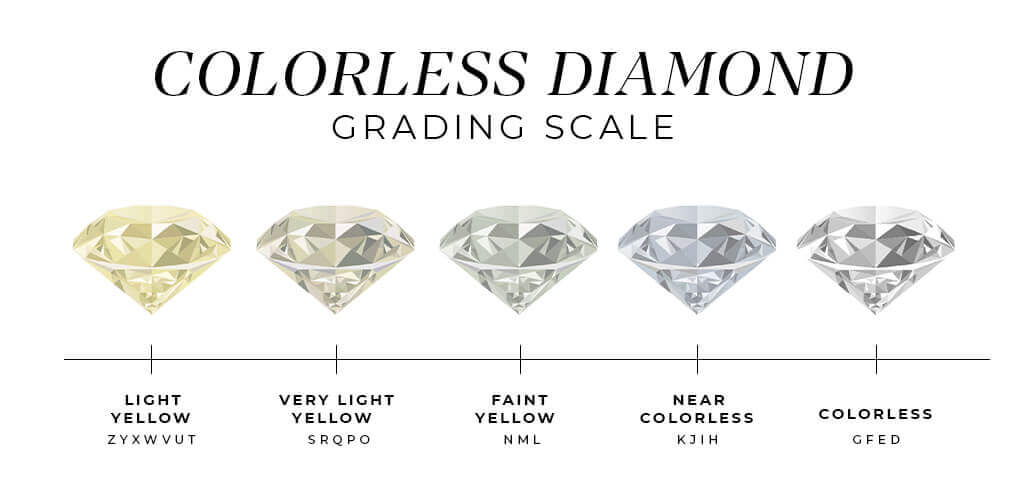
Clarity
We tend to forget that diamonds are actually the result of an intricate process, either geologically for natural diamonds, or carefully curated in a lab for lab grown options. This process can leave diamonds with inclusions and blemishes.
Related Post: Natural Diamonds vs. Lab Grown Diamonds: A Guide
A diamond’s clarity is ranked on a scale starting at FL for flawless to I1, I2, or I3 for inclusions. The ranking is determined by the number, size, placement, and type of blemishes. The fewer the blemishes, the higher the ranking and the higher the value!
Carat
A diamond’s carat weight is measured by how much its heaviness, or how much it weighs. For reference, 1 carat is equal to 200 milligrams. The price of a diamond generally goes up as its weight goes up. This is because larger diamonds are rare and highly sought after.
All else being equal, diamond price increases with carat weight because larger diamonds are more rare and more desirable. But two diamonds of equal carat weight can have very different values (and prices) depending on the three other factors within the 4Cs: Clarity, Color, and Cut. It’s important to remember that a diamond’s value is determined using all of the 4Cs, not just carat weight.
How To Buy An Engagement Ring Using The 4Cs
When buying an engagement ring, it is important to remember that the 4Cs are a guideline, not a straightforward good-or-bad scale. Keep this in mind when using the 4Cs as you shop for your engagement ring! Once you fully understand the 4Cs, you can figure out which aspects to prioritize, so you find the perfect ring within your budget!
Cut
Cut doesn’t just mean looking at a diamond’s shape and polish. Cut is directly related to the shine of the diamond, as well. Take a look at how the diamond reflects light; in an ideal diamond, there should literally be sparkles! So look for a diamond that shines bright
Related Post: How Does Diamond Shape Affect Its Price?
Color
An absolutely colorless diamond is extremely rare and shouldn’t necessarily be your top priority. Remember that G-I rated diamonds have no discernible color to the naked eye and have great value for their quality.
Looking for a budget-friendly option? Check out K rated diamonds. Even though these diamonds may be faintly colored, they pair nicely with yellow gold. Keep in mind that there is always a way to make a less expensive diamond look gorgeous.
Related Post: What Is The Best Diamond Color For Yellow Gold Rings?
Clarity
While no diamond is perfect, it can look it to the the naked eye. A diamond can appear free of blemishes and inclusions to the average person, but upon further inspection, by an expert with a jeweler’s loop, that may not be the case. When shopping for your engagement ring, consider what is important to you and your love. If you are shopping for a diamond connoisseur you may want to consider a diamond that grades higher on the clarity scale.
Carat Weight
Now we know that the higher the carat, the more value it has. It can be easy to get caught up in the carat weight of your diamond. After all, as the saying goes bigger is better right? Not necessarily when it comes to diamonds.
It’s important to remember that while a diamond’s carat is meaningful, the value of your diamond comes from all four Cs. Two diamonds of the same carat weight may have completely different values depending on their cut, color, and clarity!
When choosing a diamond for your engagement ring, look at the whole gemstone, not just its weight. Take all factors into consideration and you’ll make the perfect choice!
The Fifth C Of Diamonds: Conflict-Free
Conflict free diamonds are defined as diamonds that were mined or produced in compliance with the Kimberley Process as established by the United Nations. The Kimberley Process was created to increase transparency and oversight in the diamond supply in order to eliminate trade in conflict diamonds. Essentially, this means that conflict free diamonds do not finance civil war.
At James Allen, not only is every diamond we sell certified conflict free in compliance with the Kimberley Process, but our internal guidelines exceed these requirements.
FAQs
How does a diamond cut affect appearance?
The main effect diamond cut has on its appearance is its sparkle. This is because how a diamond is cut affects how it reflects light, and it is this light reflection that affects its brilliance.
How does clarity impact a diamond’s value?
The clearer a diamond is, meaning the fewer inclusions it has, the higher grade it will receive. The higher a diamond’s grade, the higher its value.
What are common misconceptions about the 4Cs?
While many may not realize or think the 4Cs are important, in fact, they are incredibly important. They evaluate the main aspects of your diamond and affect its price. A common misconception is that Carat Weight is the most important of the 4Cs. However, all the Cs are important.
What certifications verify the 4Cs of a diamond?
The GIA, AGS, and IGI are the gold standard of diamond grading and verify all the quality and value of your diamond.
What to consider when evaluating diamond color?
The higher a diamond’s color grade, the more colorless it is, and the higher its value. When considering diamond color for an engagement ring, keep in mind the metal color for your setting and band, the shape of your diamond, and of course, the cut, clarity, and carat weight.
Why is carat weight important?
Carat weight is important because it determines the size of your diamond. Higher carat weights generally have a higher value due to their rarity. Carat weight is also important because not all settings are created equal. Larger diamonds with higher carat weights need to be placed in a secure, higher setting.
Shopping for the perfect diamond for the perfect ring can be overwhelming. Keep in mind the 4Cs, as well as your budget and of course, the recipient’s style. But don’t worry, you’re never alone!
Our diamond consultation and inspection services are free and available 24/7. We want the diamond shopping process as smooth as possible, because finding your love was hard enough, finding the ring shouldn’t be!
SHOP RELATED PRODUCTS
With over 10 years of experience writing and editing on a wide variety of subjects, Sarah is a veteran of the content world. Since joining James Allen, she has focused on all things diamonds and fine jewelry with the goal of educating and empowering consumers.

